Product
Firmness
Score
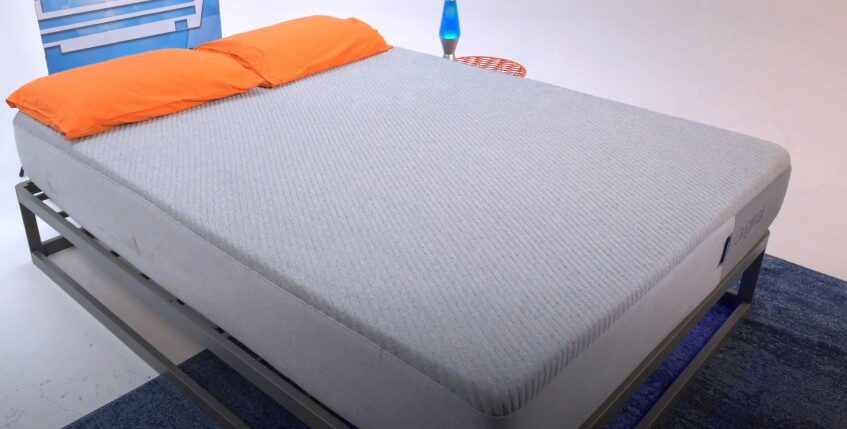
Product
Firmness
Score
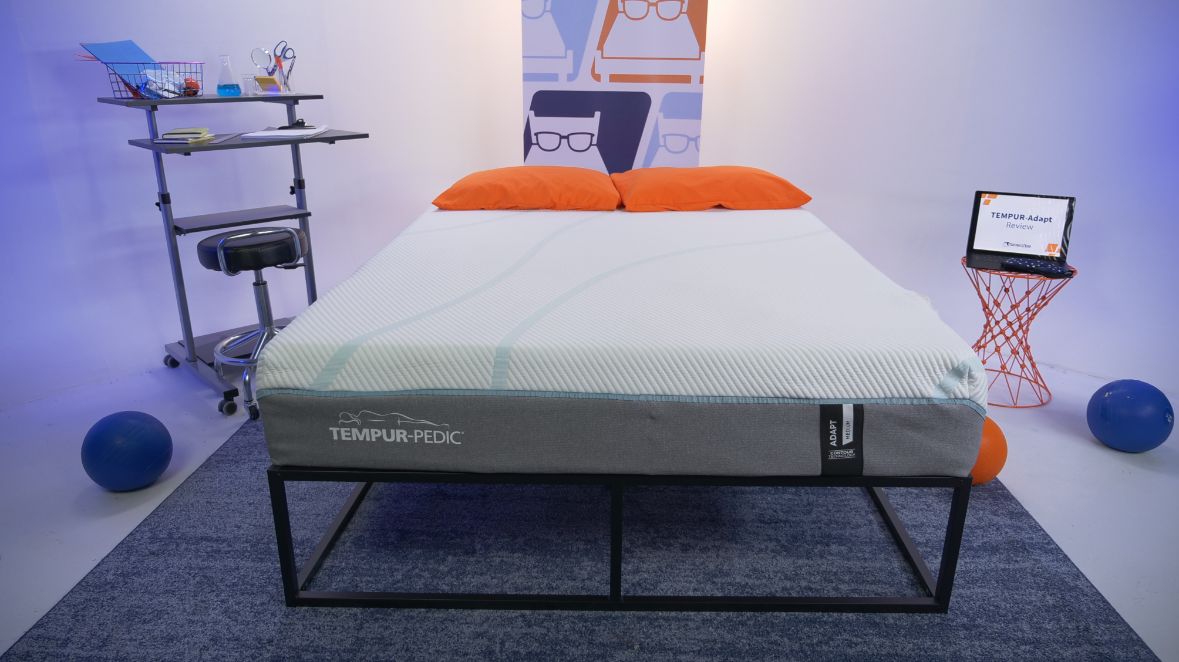
Disclosure: By clicking on the product links in this article, Mattress Nerd may receive a commission fee at no cost to you, the reader. Read full disclosure statement.
The original Casper mattress features a budget-friendly, memory foam design that’s great for all sleeping positions, while the Tempur-Adapt is a hybrid luxury mattress with hugging pressure-relief. Read on to learn more about each bed.


The OG Casper mattress has the classic, soft and sinking memory foam feel that many sleepers love, while the Tempur-Adapt combines the firmness of hybrid mattresses with the pressure relief of foam.
| Casper is best for… | Tempur-Adapt is best for… |
| Budget shoppers | Side sleepers |
| Sleepers with back pain | Couples |
| Combination sleepers | Heavyweight sleepers |

Let’s talk more about how the Casper and Tempur-Adapt mattresses feel and how they differ from each other:
Both the Casper Original and Tempur-Pedic Adapt are available in just one firmness. On a 1 to 10 firmness scale, with 1 being the softest feel, the Casper falls at a 6/10 and the Tempur-Adapt a 5/10. This makes the Casper a medium-firm mattress and the Adapt a medium.
Not only is the Tempur-Adapt softer than the Casper, but its top layer allows the body to sink in further for deep body contouring. The Casper’s soft surface is quickly balanced by the zoned memory foam layer below. With firmer foam along the body’s trunk and softer foam at the shoulders and feet, the Casper brings light contouring without the hugging Tempur-Pedic feel.
While both beds have the right firmness and cushioning for most back and side sleepers, the Casper tends to be better for stomach sleepers. With added firmness at the body’s hips, the Casper provides healthier spinal alignment for stomach sleepers than the softer Adapt mattress.
Overall, the original Casper has a more “sinking” memory foam feel, while the Tempur-Adapt offers more hugging pressure relief. In terms of performance by sleeping position, the Casper and Tempur-Adapt mattresses are both friendly to back and stomach sleepers, but the Tempur-Adapt takes the lead on support for heavier sleepers and stomach sleepers. Lastly, for side sleepers, the Casper’s more cushioning feel is a better fit for lighter and average-weight people.
Casper Performance By Body Type & Sleeping Position:
| Body Type: | BACK SLEEPERS | STOMACH SLEEPERS | SIDE SLEEPERS |
| Lightweight (< 130 lbs): | 5 | 4 | 4 |
| Average-weight (130–230 lbs): | 5 | 3 | 5 |
| Heavyweight (> 230 lbs): | 3 | 2 | 2 |
Tempur-Adapt Performance By Body Type & Sleeping Position:
| Body Type: | BACK SLEEPERS | STOMACH SLEEPERS | SIDE SLEEPERS |
| Lightweight (< 130 lbs): | 5 | 5 | 3 |
| Average-weight (130–230 lbs): | 5 | 4 | 3 |
| Heavyweight (> 230 lbs): | 5 | 4 | 2 |
Average-weight back sleepers should be able to get a great balance of support and cushion for their backs on either of these two beds, although the Tempur-Adapt will offer more support for those who like more firmness.
Next up, for stomach sleepers, it’s important to have enough firmness to keep the hips from sinking down and throwing the natural “S” curve of the spine out of alignment. So, for average-weight stomach sleepers, the more firm Tempur-Adapt will work best.
Lastly, average-weight side sleepers who need enough cushioning to take pressure off of their hips and shoulders will do best with the softer Casper original.
Moving on to heavyweight sleepers, back sleepers will need more lift and firmness, making the Tempur-Adapt’s hybrid design more comfortable. Next, for stomach sleepers, who also need a firm bed to keep the back aligned, the Tempur-Adapt will still be the best choice.
And, finally, for heavyweight side sleepers, neither mattress is really a good fit. This is because the Tempur-Adapt’s hybrid design places too much pressure on the body, and the Casper’s all-foam design isn’t supportive enough.
Last, but not least, for lightweight sleepers, back sleepers should get great sleep on either bed, depending on preference, while stomach sleepers will likely prefer the Tempur-Adapt’s extra firmness more.
For lightweight side sleepers, the Casper original is better, however. This is because lightweight side sleepers tend to need the most softness from the mattress out of any type of sleeper.
Right off the bat, a couple major differences between these mattresses are that the original Casper is a hybrid bed, and the Tempur-Adapt is a foam bed. That said, both of these mattresses do incorporate memory foam into their designs. Lastly, both the Casper and the Tempur-Adapt measure in at 11 inches.
| Casper Mattress Materials | Tempur-Adapt Mattress Materials |
| Breathable cover | Cooling cover |
| Perforated foam—1.5” | Memory foam—1.5” |
| Zoned support memory foam—2” | Transition memory foam—1.5” |
| High-density polyfoam—7” | High-density polyfoam—8” |
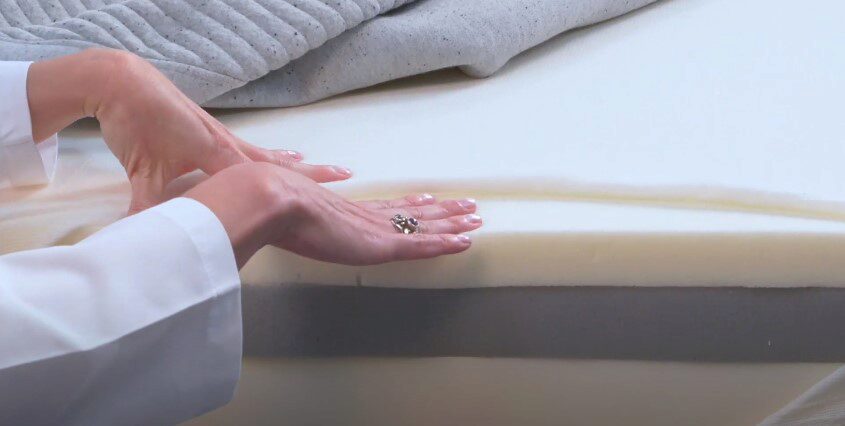
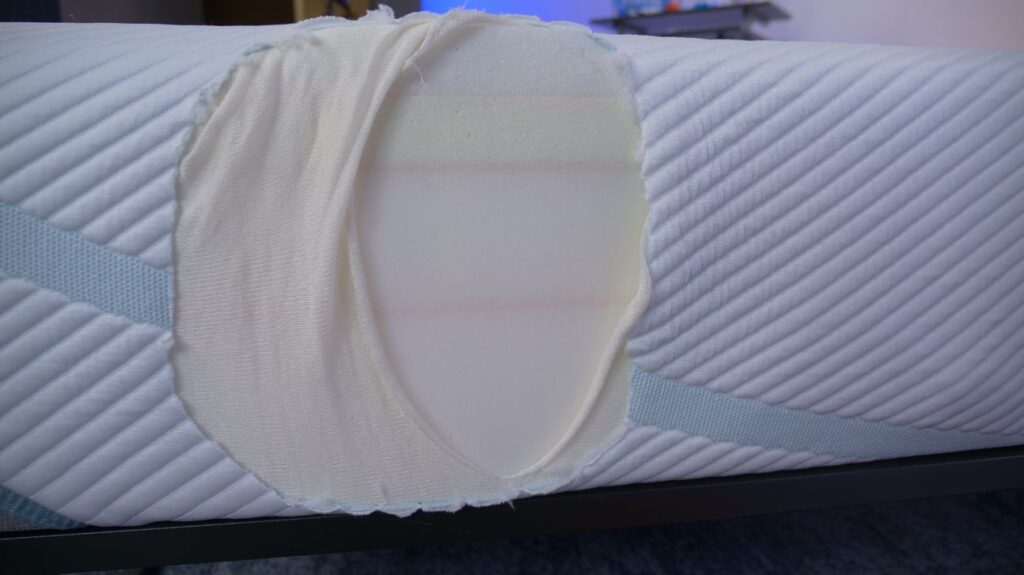
Although the Casper original and the Tempur-Adapt mattress both feature a cooling, breathable top layer, the Casper’s mattress cover has slightly better temperature regulation.
In terms of comfort layers, the Casper and Tempur-Adapt both feature similar memory foam layers, with the Casper’s zoned support memory foam layer measuring in an extra half inch thicker than the Tempur-Adapt. This gives the Casper a slight edge in terms of softness.
Lastly, both mattresses are supported by high-density polyfoam which makes each bed firmer and more durable. Since the Tempur-Pedic has an extra inch of dense foam here, it’ll make the whole bed feel more solid and firm.
| Size | Casper Prices | Tempur-Adapt Prices |
| Twin | $895.00 | $1999.00 |
| Twin XL | $995.00 | $1999.00 |
| Full | $1195.00 | $2349.00 |
| Queen | $1295.00 | $2499.00 |
| King | $1695.00 | $3199.00 |
| California King | $1695.00 | $3199.00 |
For exclusive discounts see our Casper mattress coupons.
If you sleep hot and are choosing between the Casper and Tempur-Adapt mattresses, we recommend the Casper. The traditional memory foam that’s used in the Adapt’s comfort layers is known to trap body heat. Casper utilizes breathable polyfoam along the surface for a cooler sleeping experience.
The best mattresses for couples isolate motion to ensure partners, pets, and any co-sleeping children aren’t awakened when tossing and turning at night. Both Casper and Tempur-Pedic mattresses excel at motion isolation. The foam layers in these beds absorb and minimize motion transfer to a significant extent.
While both beds excel at motion isolation, the Tempur-Pedic’s split mattress sizes can bring even greater peace for couples. For the fewest sleep disturbances, we recommend that light sleepers try out a split King or California King size Tempur-Adapt.
Edge support maximizes the area of the mattress you can sleep upon, and this performance factor assists people as they get in and out of bed. The Casper’s edges are a bit sturdier than those of the Tempur-Adapt. The doughy, hugging sensation of the Adapt’s top layer can make the edges feel unsteady, especially when sitting along the perimeter for more than a few seconds. If you like to sleep or sit along your mattress’s edges, we recommend the Casper.
Beds that conform closely to the sleeper’s body cradle pressure points like the shoulders and hips. While every sleeper needs a bit of pressure relief, side sleepers and elderly folks with arthritis or joint pain tend to sleep best on the most pressure-relieving mattresses.
Both the Tempur-Adapt and Casper are designed to deliver cushioning where you need it, but the Casper’s Zoned Support layer (with extra-soft foam at the shoulders) makes it the better option for most lightweight side sleepers. If you weigh more than 130 lbs, either mattress is likely to cradle your problem areas for excellent comfort.
See more: Best Mattresses For Back Pain
For pain relief, the Casper original’s soft feel is great for all kinds of sleepers. However, with the Tempur-Adapt, side sleepers may run into issues with pressure build-ups on their hips and shoulders.
The average lifespan of a mattress is roughly seven years, but the lifespan will vary based on the style of the mattress, the quality of its materials and construction, and how it’s cared for.
Casper offers extra support along the body’s heavier trunk, which gives it a longer-than-average lifespan for an all-foam mattress. Similarly, Tempur-Pedic beds have demonstrated durability for decades. We expect both beds to last in the seven to 10 year range.
Casper offers free standard shipping for customers who live in the 48 continental states as well as parts of Canada. Casper can ship to you if you live in Alaska or Hawaii for a shipping fee that’s calculated at checkout.
Also, mou may return your Casper mattress at any time during the brand’s 100-night sleep trial. Casper offers free returns with zero fees, so there’s no risk in trying out a Casper bed. If the mattress doesn’t work out, Casper sends someone to your door to pick it up. Casper doesn’t reuse returned beds but instead tries to donate them to local charities.
Lastly, Casper backs the brand’s mattresses with an industry-standard 10-year limited warranty. Mattress warranties cover defects, which doesn’t include anything expected with normal wear and tear. Additionally, they don’t cover user damage, such as sagging caused by improper mattress support. Casper’s warranty also covers body indentations more than 1” deep and cracks in the bed’s foam layers.
Tempur-Pedic is a luxury mattress brand that provides customers with free white glove shipping and delivery in the continental U.S., with a fee for deliveries to Alaska or Hawaii. With the brand’s white glove delivery, you don’t have to set up your new bed. Instead, a team comes to your home to do all of the heavy lifting for you. They’ll even remove your old mattress from your home if you don’t want it anymore.
Next, Tempur-Pedic’s return policy is not as generous as Casper’s policy, but it still gives you the chance to try out your mattress before fully committing. Tempur-Pedic mattresses have a 90-day sleep trial with a 30 day adjustment period, meaning you must keep your new bed for a minimum of 30 days to give it a try. If it doesn’t work out, contact Tempur-Pedic and they’ll organize a return for a $175 return fee.
And, Tempur-Pedic mattresses also come with a 10-year warranty, which covers defects in materials or workmanship. The brand’s warranty covers indentations once they exceed ¾” deep, which is more generous than the standard 1” deep indentations covered by some other warranties.
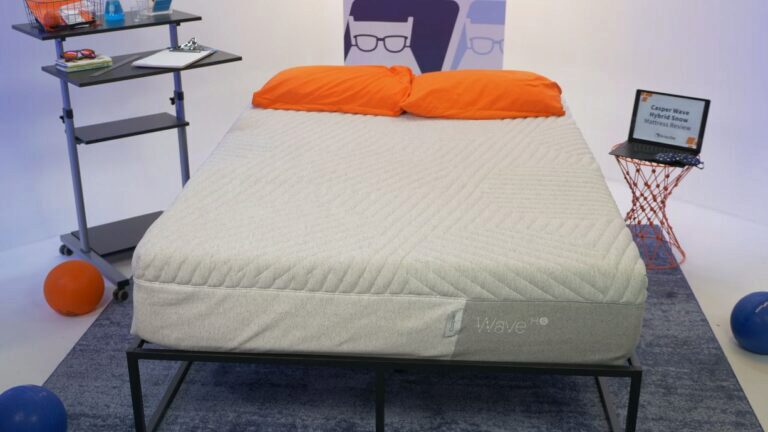
The Casper Wave Hybrid Snow is a medium-firm mattress that offers excellent responsiveness, pressure relief, and cooling. It's the best fit for back sleepers, side sleepers over 130 lbs, and stomach sleepers under 230 lbs.
We recommend this mattress for the following sleeper types:
Financing options are available for this mattress.

The Casper Wave Hybrid Snow is a medium-firm mattress that offers excellent responsiveness, pressure relief, and cooling. It's the best fit for back sleepers, side sleepers over 130 lbs, and stomach sleepers under 230 lbs.
We recommend this mattress for the following sleeper types:
Financing options are available for this mattress.

The Casper Wave Hybrid Snow is a medium-firm mattress that offers excellent responsiveness, pressure relief, and cooling. It's the best fit for back sleepers, side sleepers over 130 lbs, and stomach sleepers under 230 lbs.
We recommend this mattress for the following sleeper types:
Financing options are available for this mattress.
The Casper Nova Hybrid Snow mattress elevates the luxury experience of the original Nova Hybrid by adding extra cooling technologies. It's a reliable option for hot sleepers, particularly those who like a plush mattress or sleep on their sides.
We recommend this mattress for the following sleeper types:
Financing options are available for this mattress.
The Casper Nova Hybrid Snow mattress elevates the luxury experience of the original Nova Hybrid by adding extra cooling technologies. It's a reliable option for hot sleepers, particularly those who like a plush mattress or sleep on their sides.
We recommend this mattress for the following sleeper types:
Financing options are available for this mattress.
The Casper Nova Hybrid Snow mattress elevates the luxury experience of the original Nova Hybrid by adding extra cooling technologies. It's a reliable option for hot sleepers, particularly those who like a plush mattress or sleep on their sides.
We recommend this mattress for the following sleeper types:
Financing options are available for this mattress.
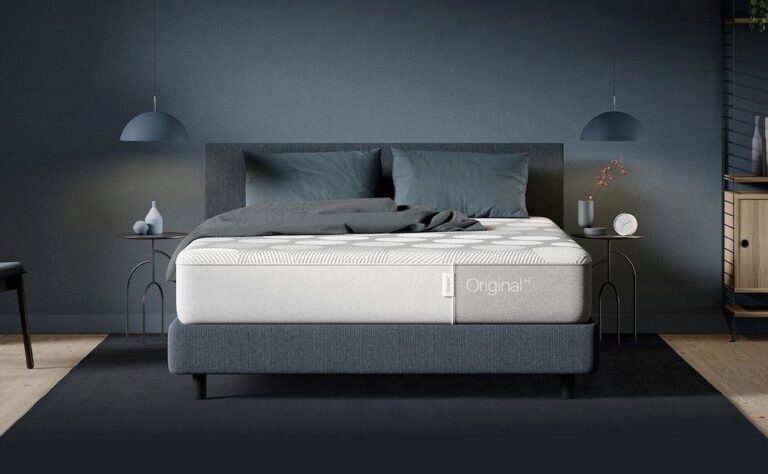
Striking the perfect balance between the contour of memory foam and the bounce of pocket-coils, the Casper Hybrid offers the best of both worlds when it comes to superior comfort and support.
We recommend this mattress for the following sleeper types:
Financing options are available for this mattress.

Striking the perfect balance between the contour of memory foam and the bounce of pocket-coils, the Casper Hybrid offers the best of both worlds when it comes to superior comfort and support.
We recommend this mattress for the following sleeper types:
Financing options are available for this mattress.

Striking the perfect balance between the contour of memory foam and the bounce of pocket-coils, the Casper Hybrid offers the best of both worlds when it comes to superior comfort and support.
We recommend this mattress for the following sleeper types:
Financing options are available for this mattress.
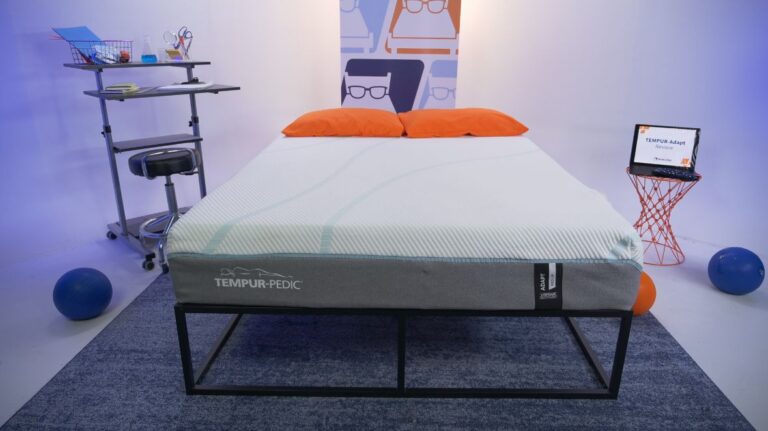
With decades of expertise making memory foam beds, it’s hard to not love TEMPUR-Pedic. The TEMPUR-Adapt is the baseline memory foam mattress model they offer and is sure to deliver a return on your investment.
We recommend this mattress for the following sleeper types:
Financing options are available for this mattress.

With decades of expertise making memory foam beds, it’s hard to not love TEMPUR-Pedic. The TEMPUR-Adapt is the baseline memory foam mattress model they offer and is sure to deliver a return on your investment.
We recommend this mattress for the following sleeper types:
Financing options are available for this mattress.

With decades of expertise making memory foam beds, it’s hard to not love TEMPUR-Pedic. The TEMPUR-Adapt is the baseline memory foam mattress model they offer and is sure to deliver a return on your investment.
We recommend this mattress for the following sleeper types:
Financing options are available for this mattress.
The Tempur-Adapt is a great fit for couples and firm mattress fans. The Casper Original mattress is a better choice for budget shoppers, stomach sleepers, and people who toss and turn. Both companies accept returns during their trial periods, but only Casper offers fee-free returns for a truly risk-free trial.
Once you’ve ordered a new Casper mattress, you can expect it to take about 30 days to fully adjust to. During this time, you can also expect some mattress off-gassing, or the “new mattress smell” right after you unpackage it, but this should clear up within a few days.
The Casper original mattress can work for some heavyweight (230 lbs) sleepers, but many heavier sleepers will find this mattress too soft and lacking in support, regardless of sleeping position. That said, the Tempur-Adapt does offer more support and firmness without compromising on the classic feel of memory foam.
Tempur-Pedic mattresses, including the Tempur-Adapt, use memory foam in their support and comfort layers, which can lead to a build-up of heat. This is because memory foam absorbs your body heat throughout the night and uses it to contour the bed to your individual sleeping position.